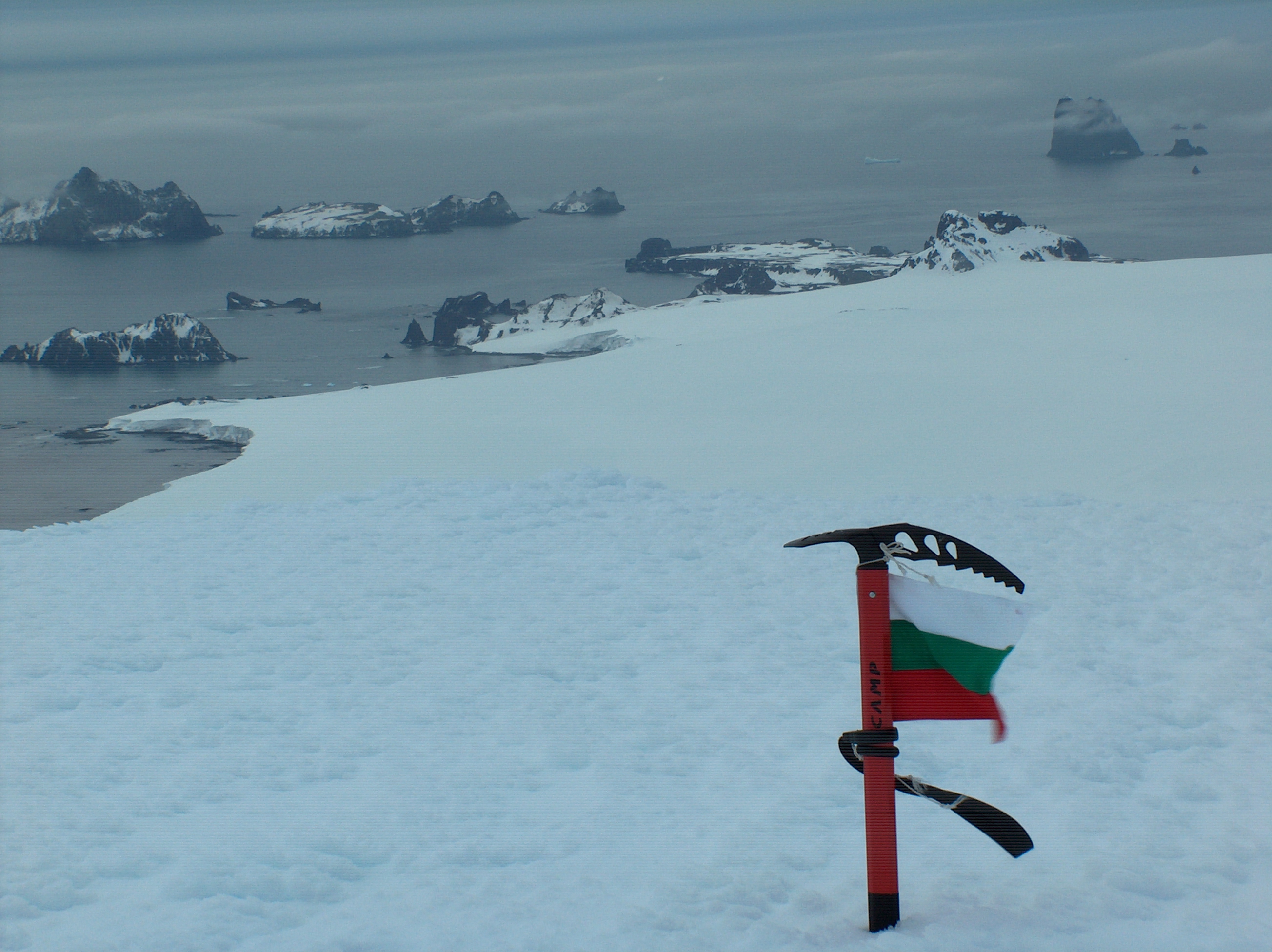|
Gerritsz Bay
Gerritsz Bay (, ) is the 4 km wide bay indenting for 2.15 km the north coast of Anvers Island in the Palmer Archipelago, Antarctica. It is entered east of Oberbauer Point and west of the northwest extremity of the small peninsula forming Cape Grönland. The point is so named in order to preserve the historical memory of the area. Having navigated the Strait of Magellan in 1599, the Dutch mariner Dirck Gerritsz Pomp (1544-1608) was blown to the south and reportedly sighted an extensive, ice-covered mountainous land. Although Gerritsz was unlikely to have reached 60° south latitude, some later publications used the name ''Gerritsz Archipelago'' for the Palmer Archipelago or ''Gerritsz Islands'' for the South Shetlands. Location Gerritsz Bay is centred at . British mapping in 1980. Maps British Antarctic Territory. Scale 1:200000 topographic map. DOS 610 Series, Sheet W 64 62. Directorate of Overseas Surveys, UK, 1980. Antarctic Digital Database (ADD).Scale 1:250 ... [...More Info...] [...Related Items...] OR: [Wikipedia] [Google] [Baidu] |
Anvers Island
Anvers Island or Antwerp Island or Antwerpen Island or Isla Amberes is a high, mountainous island long, the largest in the Palmer Archipelago of Antarctica. It was discovered by John Biscoe in 1832 and named in 1898 by the Belgian Antarctic Expedition under Adrien de Gerlache after the province of Antwerp (province), Antwerp in Belgium. It lies Ordinal directions, south-west of Brabant Island at the Ordinal directions, south-western end of the group. The south-western coastline of the island forms part of the Southwest Anvers Island and Palmer Basin Antarctic Specially Managed Area (ASMA 7). Cormorant Island, an Important Bird Area, lies 1 km off the south coast. There is a small science outpost called Palmer Station on the south end of Anvers island since the late 1960s; it is the smallest and farthest north of three the U.S. has on the continent. It is staffed by a few dozen people mostly doing marine and biology research, and is usually resupplied by ship as it has no reg ... [...More Info...] [...Related Items...] OR: [Wikipedia] [Google] [Baidu] |
Palmer Archipelago
Palmer Archipelago, also known as Antarctic Archipelago, Archipiélago Palmer, Antarktiske Arkipel or Palmer Inseln, is a group of islands off the northwestern coast of the Antarctic Peninsula. It extends from Tower Island in the north to Anvers Island in the south. It is separated by the Gerlache Strait, Gerlache and Bismarck Strait, Bismarck straits from the Antarctic Peninsula and Wilhelm Archipelago, respectively. The archipelago is in the British Antarctic Territory, British, Chilean Antarctic Territory, Chilean, and Argentine Antarctica, Argentine Claims. Palmer Archipelago is located at . History Adrien de Gerlache, leader of the Belgian Antarctic Expedition (1897–1899), discovered the archipelago in 1898. He named it Archipelago Palmer for American Captain Nathaniel Palmer, who navigated these waters in 1820. Both Argentina and the United Kingdom have operated research stations there. Islands The archipelago includes: Gallery File:Gerlache Strait.png, Map of Ger ... [...More Info...] [...Related Items...] OR: [Wikipedia] [Google] [Baidu] |
Antarctica
Antarctica () is Earth's southernmost and least-populated continent. Situated almost entirely south of the Antarctic Circle and surrounded by the Southern Ocean (also known as the Antarctic Ocean), it contains the geographic South Pole. Antarctica is the fifth-largest continent, being about 40% larger than Europe, and has an area of . Most of Antarctica is covered by the Antarctic ice sheet, with an average thickness of . Antarctica is, on average, the coldest, driest, and windiest of the continents, and it has the highest average elevation. It is mainly a polar desert, with annual Climate of Antarctica#Precipitation, precipitation of over along the coast and far less inland. About 70% of the world's freshwater reserves are frozen in Antarctica, which, if melted, would raise global sea levels by almost . Antarctica holds the record for the Lowest temperature recorded on Earth, lowest measured temperature on Earth, . The coastal regions can reach temperatures over in the ... [...More Info...] [...Related Items...] OR: [Wikipedia] [Google] [Baidu] |
Oberbauer Point
Oberbauer Point (, ‘Nos Oberbauer’ \'nos 'o-ber-ba-u-er\) is the point on the west side of the entrance to Gerritsz Bay on the north coast of Anvers Island in the Palmer Archipelago, Antarctica. The point is named after the Austrian Bulgarian artist Joseph Oberbauer (1853-1926). Location Oberbauer Point is located at , which is 5.67 km west of Cape Grönland and 13.52 km northeast of Quinton Point. British mapping in 1980. Maps British Antarctic Territory. Scale 1:200000 topographic map. DOS 610 Series, Sheet W 64 62. Directorate of Overseas Surveys, UK, 1980. Antarctic Digital Database (ADD).Scale 1:250000 topographic map of Antarctica. Scientific Committee on Antarctic Research (SCAR). Since 1993, regularly upgraded and updated. References Bulgarian Antarctic Gazetteer.Antarctic Place-names Commission The Antarctic Place-names Commission was established by the Bulgarian Antarctic Institute in 1994, and since 2001 has been a body affiliated with the M ... [...More Info...] [...Related Items...] OR: [Wikipedia] [Google] [Baidu] |
Cape Grönland
Cape Grönland () is a cape on the east side of the entrance to Gerritsz Bay which forms the northern extremity of Anvers Island, in the Palmer Archipelago, Antarctica. The cape was discovered by a German expedition 1873–74, under Eduard Dallmann, who named it for his expedition ship, the ''Grönland''. It was later charted by the French Antarctic Expedition, 1903–05, under Jean-Baptiste Charcot Jean-Baptiste Étienne Auguste Charcot, better known in France as Commandant Charcot, (15 July 1867 in Neuilly-sur-Seine near Paris – 16 September 1936 at sea (30 miles north-west of Reykjavik, Iceland), was a French scientist, medical doctor .... References Cape Gronland Gronland {{AnversIsland-geo-stub ... [...More Info...] [...Related Items...] OR: [Wikipedia] [Google] [Baidu] |
Strait Of Magellan
The Strait of Magellan (), also called the Straits of Magellan, is a navigable sea route in southern Chile separating mainland South America to the north and the Tierra del Fuego archipelago to the south. Considered the most important natural passage between the Atlantic and Pacific oceans, the strait is approximately long and wide at its narrowest point. In 1520, the Spanish expedition of the Portuguese navigator Ferdinand Magellan, after whom the strait is named, became the first Europeans to discover it. Magellan's original name for the strait was ''Estrecho de Todos los Santos'' ("Strait of All Saints"). The King of Spain, Emperor Charles V, who sponsored the Magellan-Elcano expedition, changed the name to the Strait of Magellan in honor of Magellan. The route is difficult to navigate due to frequent narrows and unpredictable winds and currents. Maritime piloting is now compulsory. The strait is shorter and more sheltered than the Drake Passage, the often storm ... [...More Info...] [...Related Items...] OR: [Wikipedia] [Google] [Baidu] |
Dutch People
The Dutch, or Netherlanders (Dutch language, Dutch: ) are an ethnic group native to the Netherlands. They share a common ancestry and culture and speak the Dutch language. Dutch people and their descendants are found in migrant communities worldwide, notably in Argentina, Aruba, Australia, Brazil, Canada,Based on Statistics Canada, Canada 2001 Census]Linkto Canadian statistics. Caribbean Netherlands, Curaçao, Germany, Guyana, Indonesia, New Zealand, Sint Maarten, South Africa, Suriname, and the United States.According tFactfinder.census.gov The Low Countries were situated around the border of France and the Holy Roman Empire, forming a part of their respective peripheries and the various territories of which they consisted had become virtually autonomous by the 13th century. Under the Habsburgs, the Netherlands were organised into a single administrative unit, and in the 16th and 17th centuries the Northern Netherlands gained independence from Spain as the Dutch Republic. The ... [...More Info...] [...Related Items...] OR: [Wikipedia] [Google] [Baidu] |
Dirck Gerritsz Pomp
Dirck Gerritszoon Pomp, alias Dirck China (1544 – c. 1608), was a Dutch sailor of the 16th–17th century, and the first known Dutchman to visit China and Japan. Pomp was born in Enkhuizen in the Burgundian Netherlands. As a youth, he was sent in 1555 to Lisbon to live with relatives who were traders, to learn Portuguese and train as merchant. In 1568 at the age of 22, Pomp established himself as a merchant on the isle of Goa off the coast of India. From there, he visited China and Japan aboard Portuguese trading ships. Although the date of his first visit is not known, he sailed to Japan twice before 1600. It is recorded that he arrived in Japan on July 31, 1585, for his second visit there, on the Portuguese ship ''Santa Cruz''. He described Japan as the "isle where there is a lot of silver and where Portuguese ships arrive every year with silk, which is sold for silver". Pomp returned to Enkhuizen in April 1590, where he talked abundantly about Japan. He befriended merchant Ja ... [...More Info...] [...Related Items...] OR: [Wikipedia] [Google] [Baidu] |
South Shetland Islands
The South Shetland Islands are a group of List of Antarctic and subantarctic islands, Antarctic islands located in the Drake Passage with a total area of . They lie about north of the Antarctic Peninsula, and between southwest of the nearest point of the South Orkney Islands. By the Antarctic Treaty System, Antarctic Treaty of 1959, the islands' sovereignty is neither recognized nor disputed by the signatories. According to British government language on the topic, "the whole of Antarctica is protected in the interests of peace and science." The islands have been claimed by three countries, beginning with the United Kingdom since 1908 (since 1962 as part of the equally unrecognized British Antarctic Territory). The islands are also claimed by the governments of Chile (since 1940, as part of the Antártica Chilena province), and by Argentina (since 1943, as part of Argentine Antarctica, Tierra del Fuego Province, Argentina, Tierra del Fuego Province). Several countries ... [...More Info...] [...Related Items...] OR: [Wikipedia] [Google] [Baidu] |
Antarctic Place-names Commission
The Antarctic Place-names Commission was established by the Bulgarian Antarctic Institute in 1994, and since 2001 has been a body affiliated with the Ministry of Foreign Affairs (Bulgaria), Ministry of Foreign Affairs of Bulgaria. The Commission approves Bulgarian place names in Antarctica, which are formally given by the List of Presidents of Bulgaria, President of the Republic according to the Constitution of Bulgaria, Bulgarian Constitution (Art. 98) and the established international practice. Bulgarian names in Antarctica Geographical names in Antarctica reflect the history and practice of Antarctic exploration. The nations involved in Antarctic research give new names to nameless geographical features for the purposes of orientation, logistics, and international scientific cooperation. As of 2023, there are some 20,125 named Antarctic geographical features, including 1,606 features with names given by Bulgaria. [...More Info...] [...Related Items...] OR: [Wikipedia] [Google] [Baidu] |
Bays Of The Palmer Archipelago
A bay is a recessed, coastal body of water that directly connects to a larger main body of water, such as an ocean, a lake, or another bay. A large bay is usually called a ''gulf'', ''sea'', ''sound'', or ''bight''. A ''cove'' is a small, circular bay with a narrow entrance. A ''fjord'' is an elongated bay formed by glacial action. The term ''embayment'' is also used for , such as extinct bays or freshwater environments. A bay can be the estuary of a river, such as the Chesapeake Bay, an estuary of the Susquehanna River. Bays may also be nested within each other; for example, James Bay is an arm of Hudson Bay in northeastern Canada. Some large bays, such as the Bay of Bengal and Hudson Bay, have varied marine geology. The land surrounding a bay often reduces the strength of winds and blocks waves. Bays may have as wide a variety of shoreline characteristics as other shorelines. In some cases, bays have beaches, which "are usually characterized by a steep upper foreshore wit ... [...More Info...] [...Related Items...] OR: [Wikipedia] [Google] [Baidu] |





